At present, the AC power combination control method mainly includes the following:
1. The primary side feedback power supply. This technology is used to drive small-power LED lamps and is transplanted with the original primary feedback charger switching power supply. This part of the AC drive has not changed specifications due to LED applications, and there are many models to choose from. In addition to the limited size, there is no essential difference between the design and the switching power supply. It is reasonable to use the LED.
2. High-power isolated lighting power supply. In this technology, LED drivers are all designed with switching power supplies. No company has ever introduced AC-driven devices for LEDs. Isolated power supplies are switching power supplies. Basically, it can be asserted that the switching power supply is the LED-AC driver, and it is also one of the main application methods;
3. Non-isolated LED drive power. The non-isolated LED driver introduces more targeted power technology, which is worthy of recognition. It is a direction of LED power supply. Isolation safety depends mainly on the design of the creepage gap with the casing. It does not stipulate that the LED power supply must be isolated and does not limit the output voltage value. The key is which isolation is safer. Non-isolated has the advantages of high driving efficiency, and combined with the structure can also design high quality, safe and efficient LED products.
4. SCR dimming compatible power supply. The technology is special and limited in quantity and is a transitional technology.
In the current mainstream AC power market, the focus is on the first three items. Non-isolated technology has developed rapidly. The first two isolated LED driver designs are all transplanted switching power supply chips, which essentially do not leave the original mode of the switching power supply. Although experts and scholars of various companies are working on LED lighting power supply research, the current technology is still in the switching power supply stage. For this reason, the main research focus of LED lighting power supply should be placed in the secondary DC section, combining constant voltage switching power supply with distributed constant current technology.
AC-LED circuit design reference:As the fourth-generation lighting fixtures of green, energy-saving, energy-saving and long-life, LED light sources have sprung up, attracted wide attention and are rapidly developing in full swing. The current LED light source is a semiconductor device that operates at a low voltage (VF=2→3.6V) and a large current (IF=200→1500mA), and must provide a suitable DC current to emit light normally. The technology of direct current (DC) driving LED light source has become more and more mature. Since the power supply used in our daily lighting is high voltage AC (AC 100 ~ 220V), it is necessary to use the buck technology to obtain a lower voltage. The transformer or switching power supply is stepped down, and then the alternating current (AC) is converted into direct current (DC) and then converted into a direct current constant current source to cause the LED light source to emit light. Therefore, the system application scheme of DC-driven LED light source must be: transformer + rectification (or switching power supply) + constant current source (Figure 1).
LED lamps must have a certain amount of space to house this module, but for E27 standard screw luminaires, the space is very limited and difficult to place. Whether it is via transformer + rectification or switching power supply step-down, the system will have a certain amount of loss. When the DC LED is switched between AC and DC, about 15% to 30% of the power is lost, and the system efficiency is difficult to achieve more than 90%. . If the LED light source can be directly driven by AC (AC), the system application scheme will be greatly simplified, and the system efficiency will easily reach 90% or more.

Figure 1: System application of DC-driven LED light source
As early as 2005, the Korean company invented AC LEDs that can be directly driven by AC, followed by III-N Technology in the US, and 3N technology developed a gallium nitride substrate based on MOCVD growth technology to enhance lighting and sensor applications. And reduce costs and increase production efficiency. Provides 6-inch production technology for large and small silicon LEDs. 3N invented the single-chip AC light-emitting diode (AC LED), which has established a comprehensive patent portfolio to protect and improve technology, firmly establishing its proprietary position, and is the premier large-scale commercial production of AC LED products.
In 2008, Taiwan Industrial Technology Research Institute completed AC LED products that can be industrially produced and have practical application system solutions. It can be directly plugged into AC 110V AC voltage of 60Hz or higher to make AC light, which is used for indication. Lamps, neon lights, and low wattage lights can effectively solve the shortcomings of existing LEDs that cannot be used directly under AC sources, resulting in higher product application costs. Taiwan Industrial Technology Institute's On Chip AC LED (on-chip AC LED) won the 2008 R&D 100 Award, which is known as the American Industry Innovation Oscar. Nowadays, only the United States, South Korea and Taiwan have this technology in the world. The Taiwan Industrial Technology Research Institute has developed the process technology of white, blue and green AC LED, which is not only synchronized with the international market, but also one of the world leaders.
Advantages of AC LED lamps
Compared with incandescent lamps, halogen lamps, fluorescent fluorescent lamps, fluorescent energy-saving lamps, and DC LED lamps, AC LED lamps have more energy-saving, longer life, and more energy-efficient. AC LED illumination eliminates the need for costly AC/DC converters and constant current sources. The performance comparison between AC LED and existing lighting fixtures is shown in Table 1.
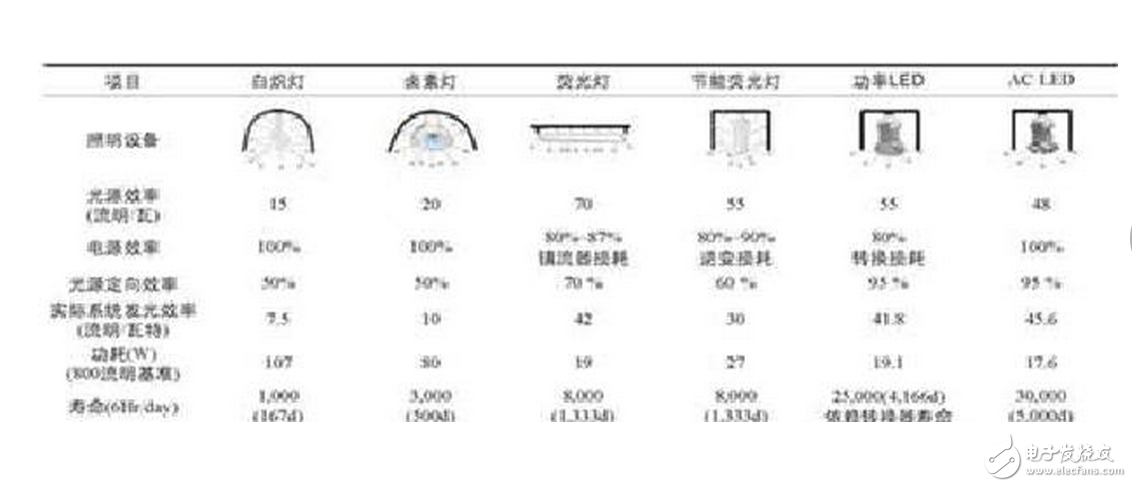
Table 1: Performance comparison between AC LEDs and existing lighting fixtures
AC LED source ultra-fine grain with a special interlaced matrix arrangementThe major technological breakthrough of AC LED light source is the special arrangement and combination technology of ultra-fine LED die in packaging. At the same time, the diode characteristic of LED PN junction is used as rectification, and semiconductor process plays a very important role. AC LEDs are integrated into a stack of tiny grains through a semiconductor process, using a staggered matrix arrangement process, and adding a bridge circuit to the chip design, so that the AC current can be double-conducted to achieve illumination. The arrangement of the crystal grains is shown in Figure 2. The left picture shows the AC LED die in a staggered matrix arrangement. The right small picture shows the actual AC LED die arrangement. The AC LED die is illuminated after the AC is connected. Only two leads need to be introduced into the AC source to work.
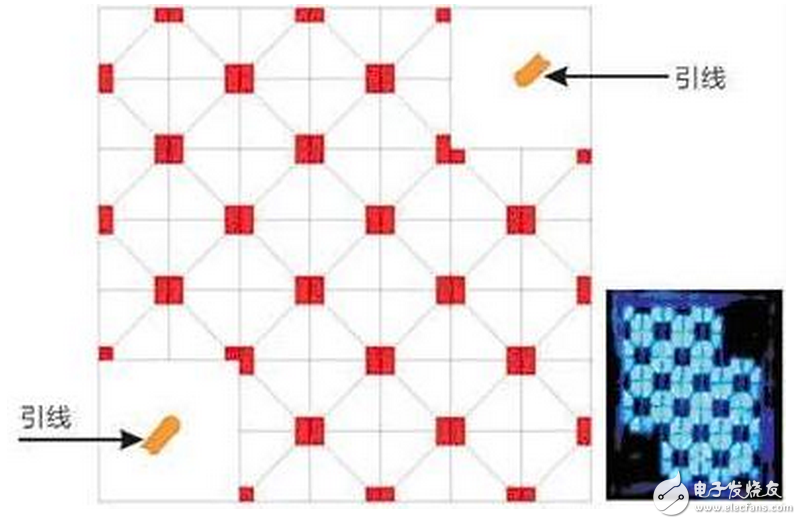
Figure 2: AC LED die arrangement photo and schematic
How AC LED light sources workThe working principle of the AC LED light source is shown in Figure 3. The stack of LED micro-arrays is divided into five strings by an interlaced matrix arrangement. The AC LED die is composed of a rectifier bridge. The two ends of the rectifier bridge are connected to the AC source. The other end is connected with a string of LED dies. The positive half of the alternating current flows along the blue path, the three strings of LED illuminate, the negative half cycle flows along the green path, and three strings of LED dies are illuminated, on the four bridge arms. The LED dies are illuminated in turn, and the LED dies on the bridge arms are simultaneously illuminated. The middle string of LED dies are always illuminated due to sharing.
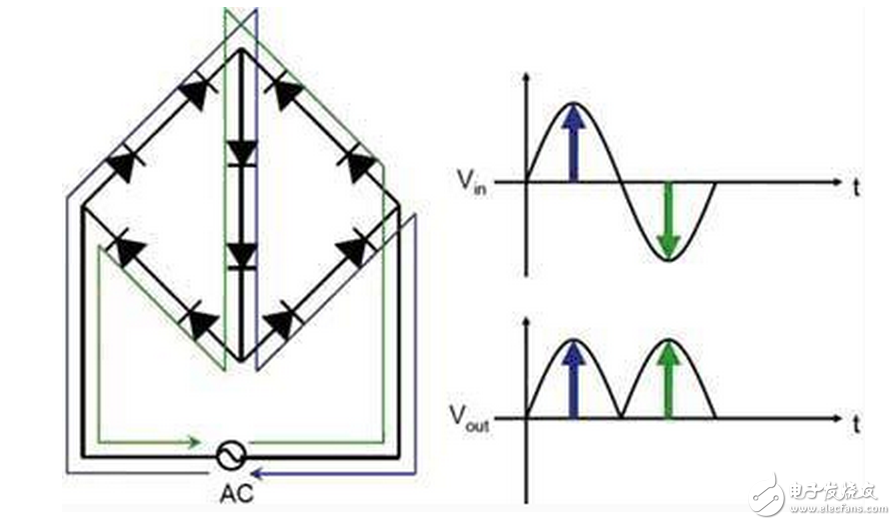
In 60 Hz AC, it will be lit at a frequency of 60 times per second. The DC obtained by the rectifier bridge is pulsating DC, and the LED's illumination is also flashing. The LED has the characteristics of power-off afterglow, and the afterglow can be kept for tens of microseconds. Because the human eye is inert to the flow point memory, the result is The eye's interpretation of the working mode of the LED + light source + afterglow is continuous illumination. LEDs work half the time, half of the time is resting, so heat is reduced by 40% to 20%. Therefore, the life of the AC LED is longer than that of the DC LED.
Mature products of AC LEDs such as AX3201 and AX3211 for AC110V and AX3221 and AX3231 for 220V. For AC110V power is 3.3W ~ 4W, working current is 40mA; AC220V power is 3.3W-4W, working current is 20mA (Figure 4). The LED die is bonded directly to the copper-aluminum substrate. The pin is shown in Figure 5.
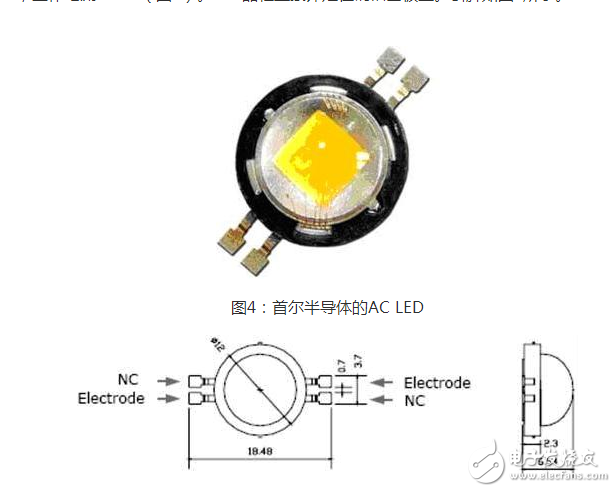
Figure 5: AC LED pin diagram
Typical application technology for AC LEDThe electrical schematic diagram of the typical application of AC LED is very simple as shown in Figure 6. The positive temperature coefficient thermistor PTC and the current limiting resistors R1, R2 and R3 are connected to the AC LED at both ends, and the 110V or 220V AC can be connected. Enter the lighting work.
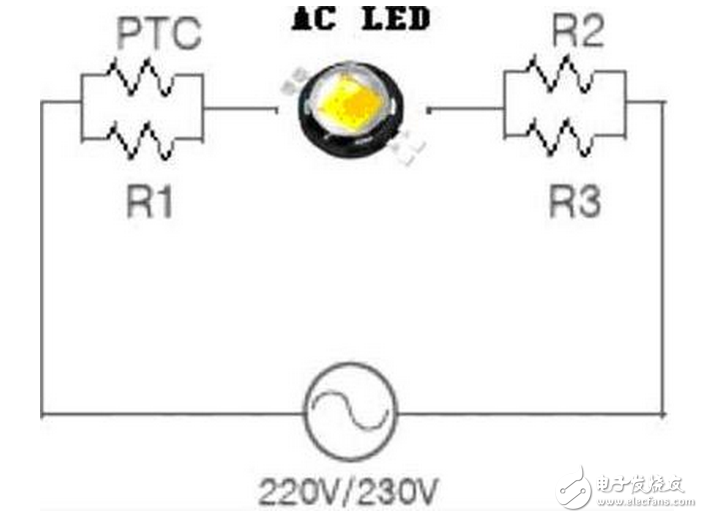
Figure 6: Electrical schematic of a typical application of an AC LED
When the LED is mass-produced, its impedance has a certain dispersion, and AC LED is also the same. In order to facilitate the high-volume application of downstream manufacturers, the LED light source manufacturer will perform the impedance division on the mass-produced products at the factory, when the customer is in use. The current limiting resistor of the corresponding resistance value can be checked according to the VF binning table provided by the LED light source manufacturer. As shown in Table 2, the VF binning and current limiting resistance meter of the AX3221/AX3231 are shown.
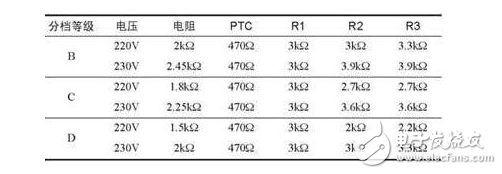
Table 2: VF binning and current limiting resistor table of AX3221/AX3231
AC LED developmentThe convenience of AC LED in household power does not need to be equipped with an AC-to-DC converter like DC LED, which not only saves the cost of this converter, but also avoids the LED light source itself is not bad, but The converter is broken first. The AC-DC converter can be said to be an electronic component that deteriorates over time and is broken. Its life span is shorter than that of the LED light source itself. Therefore, many LED lamps are broken at present, and the LED light source is not exhausted, but LED The AC-DC converter used in the luminaire was broken first. Another feature of AC LEDs is that their processes are arranged in a staggered matrix, which is lit up in turn. It will be lit at 60 times per second in 60 Hz AC, which also makes the life of AC LEDs longer. The DC LED is long.
However, AC LED has two shortcomings at this stage. One is that the luminous efficiency is not as high as the DC LED. This is because the development of DC LED is currently the mainstream. The AC LED has just started, and the luminous efficiency of AC LED can catch up, even exceed DC. LED's. The second is that AC LEDs are at risk of electric shock. Therefore, if AC LEDs are to be applied to LED lighting fixtures, the bare metal fins should be avoided, but the tropicals should be indirectly. This is the core concept of the development of new liquid-filled LED solid-state lighting fixtures.
AC LED has just entered the growth stage, and currently it is not ideal in terms of brightness, power, etc., but the application of AC LED is simple, no need for transformer converter and constant current source, and low cost and high efficiency have shown strong vitality. The technology of AC LED is developing rapidly. In a few years, high-brightness, high-power, low-cost products will be available in large numbers.
KNM1 Series Moulded Case Circuit Breaker
KNM1 series Moulded Case Circuit Breaker is MCCB , How to select good Molded Case Circuit Breaker suppliers? Korlen electric is your first choice. All moulded Case Circuit Breakers pass the CE.CB.SEMKO.SIRIM etc. Certificates.
Moulded Case Circuit Breaker /MCCB can be used to distribute electric power and protect power equipment against overload and short-current, and can change the circuit and start motor infrequently. The application of Moulded Case Circuit Breaker /MCCB is industrial.
Korlen electric also provide Miniature Circuit Breaker /MCB. Residual Current Circuit Breaker /RCCB. RCBO. Led light and so on .
KNM1 series Molded Case Circuit Breaker,KNM1 series Small Size Molded Case Circuit Breaker,KNM1 series Electrical Molded Case Circuit Breaker,KNM1 series Automatic Molded Case Circuit Breaker
Wenzhou Korlen Electric Appliances Co., Ltd. , https://www.zjthermalrelay.com